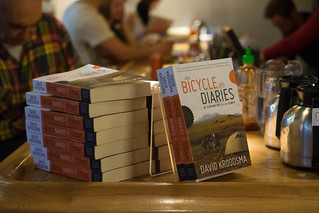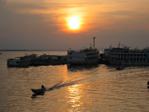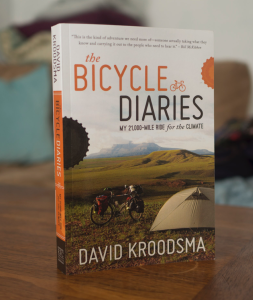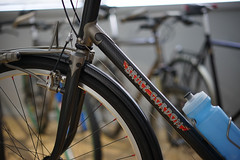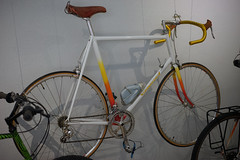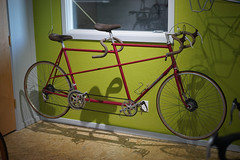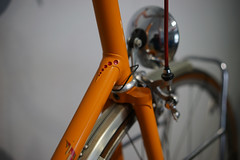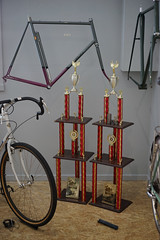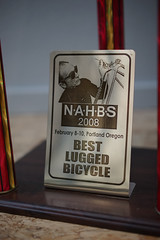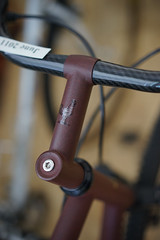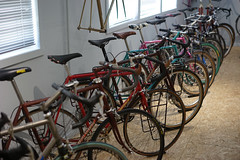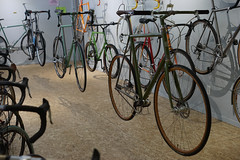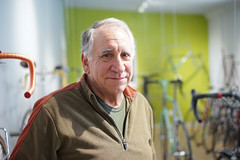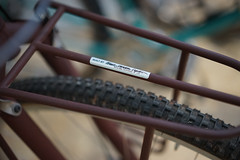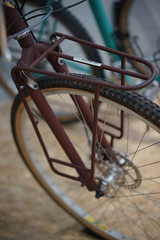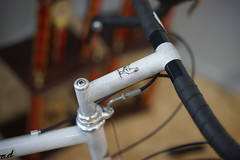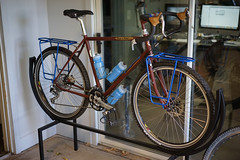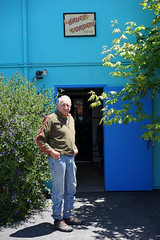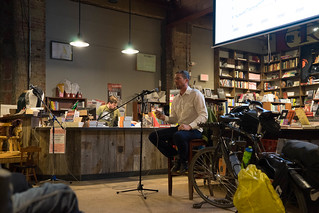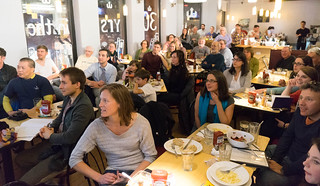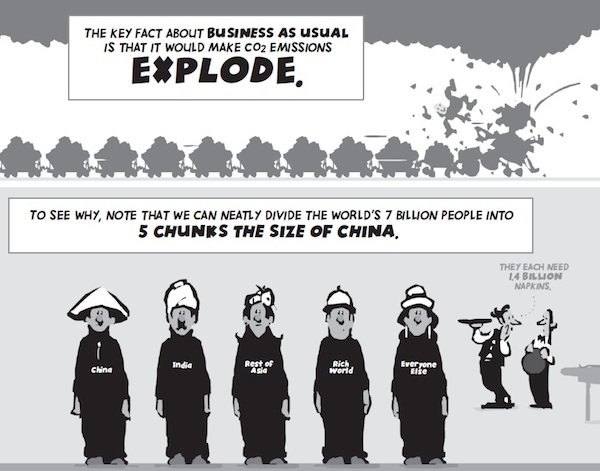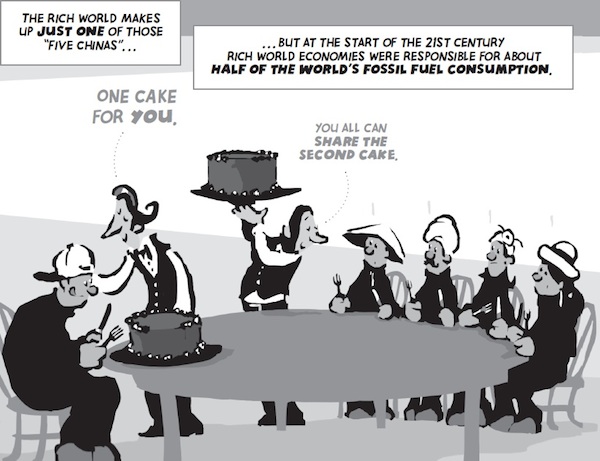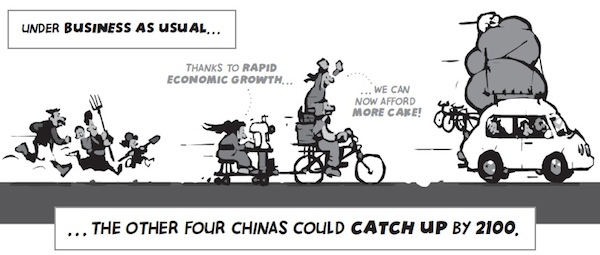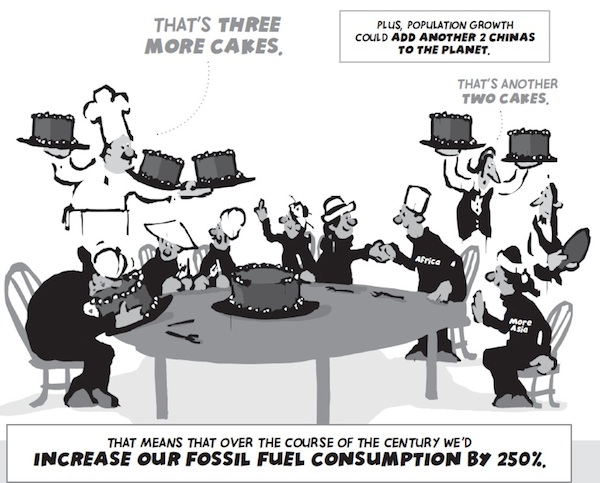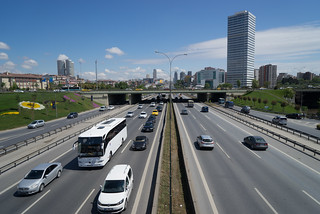TL;DR:
A book I published a decade ago, The Bicycle Diaries, is good, but I had to reread it to be reminded of that. You can download a free copy here.
LONGER VERSION
Ten years ago I published a book about my bicycle journey from California to Argentina.1
I wrote the book because the trip I had just experienced was so incredible, so expansive, so life-changing that I felt I had to share it. Also, I thought the book could make a difference. I had used the trip to draw attention to climate change, and I was successful during the ride, appearing in the national media of almost every country I visited. The book would have the same goal — it would lure people in with adventure and then share stories about what climate change meant for the countries I visited, getting people to care about how a warming world would affect people and places across two continents.
The book took a year to write and then another five years to edit and refine–I often joke that I wish it were as easy to write a book as it is to bike to Argentina. I was unable to get a publisher, so I ran a kickstarter campaign to pay an editor and designer, and I self published.
By the standards of self publishing, it was a huge success. I sold a few thousand copies, gained good reviews on Amazon and Goodreads, and even earned some minor independent publishing awards. Yet my feelings on the book and the time spent writing it are mixed.
In the past month, I picked up The Bicycle Diaries and read it for the first time in a decade, hoping the passage of time would provide new perspective. My goal was to assess it as a work of storytelling and activism, and to reflect on how I feel about spending those six years.
My biggest surprise on rereading the book… is that I think it is good. Yes, there’s a lot I want to improve. The first third is the least engaging. One reviewer, Mike, agrees, writing “… I found it hard to get into this book at first. It seemed to take Kroodsma a long time to get going; there was too much about his motivations.” He goes on to say, “ But then Kroodsma crosses the border into Mexico, and the story takes off. As he works his way down Baja California, the landscape unfolds, and he meets the people. As the journey gets interesting, so does Kroodsma. He’s a tough traveler, and a good guest. By the time he gets to Mexico City, The Bicycle Diaries has become an engaging read.”
I also find the opening chapter slow, my backstory only so interesting. The narrative picks up through Mexico, making me want to keep traveling. Central America was fascinating, although the story lagged just a bit as I crossed numerous countries in a short time period.
But South America was the adventure of a lifetime. I was hooked reliving it: the contrasts of Colombia and Venezuela, biking to the heart of the Amazon, willing my bike from the jungle to the peaks of the Andes in Peru, crossing the world’s largest salt flat in Bolivia, and then following the Andes to the southernmost road in the Americas. I feel like the writing gets better as well, and I’m satisfied with the conclusions I draw.
The same reviewer, Mike, agrees. “The point at which I decided this was not just a good book, but a very good one, came when Kroodsma passed through a town called Caucasia in Colombia. There’s nothing remarkable about the place; somehow he just brings it very much alive. This feeling of riding with Kroodsma gets stronger as he pedals over the northern Andes and into Venezuela, and southward into Brazil. Along the way there are fishermen, oil people, teachers, drunks and more. Then he makes a remarkable voyage with his bike up the Amazon to Peru, and has an even more extraordinary trip across the high cordillera to the Pacific coast. The man is a true adventurer. Woven into the narrative are Kroodsma’s thoughts on the climate. This could indeed have been earnest and preachy, but Kroodsma has a light touch, and ties his remarks to the ecosystem he is passing through – coastal wetlands, agriculture, the high glaciers that provide water for Peru’s cities. It isn’t heavy; it’s very interesting, and is also well-referenced.”
I’m also struck by what a complete dork I am. I’m in the midst of an epic adventure, having just figured out how to put my bike on the back of a horse so that I could cross the Andes, and I launch into a two page segue about biodiversity corridors and how they can help species adapt to climate change. Or I’ll spend a page talking about sustainable city design or how the inter tropical convergence zone may shift due to climate change and what that means for farmers (or people who want to know the best seasons to bike across parts of Latin America). But… it is true to who I am. I really am a big dork. It feels honest.
The segues on climate change occasionally feel forced, but overall, the concept works. Biking across a continent (or two) gives one a visceral sense of the richness of the landscapes and the people who live there. Such travel makes you (or at least me) care about these people and places, and it is the perfect vantage point from which to ask what climate change may mean for them.
I put a ton of research into the book’s climate science, and sadly, most of my descriptions don’t feel dated or incorrect ten years later. I think the hardest part of reading it is realizing that the predictions are bearing out, and some things I wrote about that “may happen” are now actually happening. Venezuela just became the first country to lose all of its glaciers. Islands I visited off the coast of Panama are now being abandoned due to sea level rise. In California, I wrote “warmer temperatures and dryer weather could cause the alpine forests in the Sierra Nevada to retreat, even to almost completely disappear.” I didn’t write how they would retreat, and it’s clear now that it’ll be through fire. I now live in California’s Sierra Nevada, and every summer I fear the forests burning. In 2021 I even had to evacuate my home. The experts I talk to suggest not all of that forest will grow back, shrinking as predicted. Reading my book, I’m reminded of the other ecosystems I biked that could face similar fates — the cloud forest in Costa Rica, the paramo in Colombia, and even the vast Amazon jungle may all become a fraction of their glory in a warmer world.
The book is more about the people I meet than the ecosystems I pass through. I’m reminded of the people living right at sea level in Venezuela whose homes are at risk and of the farmers in Honduras who told me that they went hungry for a year following a devastating hurricane. I’m also reminded of the poverty and how many people rightfully yearn for more–the same farmers had dirt floors and used almost no electricity, and they asked me about the comfortable homes in the U.S. My concluding message in the book is about the need to provide more — more energy, specifically — while somehow also cutting emissions. The conservation message is a complicated one, and I hope my journey provided some nuance to the story.
The majority of readers seemed to appreciate my analysis of climate change. One reviewer even wrote “Great book. Well written and a good story of adventure, but more importantly, I think this is actually the best book on climate change that I have ever read (and I’ve read more than a few).”
The reviews I’m the most proud of, though, are those actively hostile to my message. One review, titled “How Many Trees Died to Print the Book?”, said “What I couldn’t stand was his supposed ‘reason’ for going.” The review, though, gave it three stars and said “He wrote very well, and I love the way he included historical, sociological, and cultural information relevant to each place.” Another reader, Rob, gave it three stars and wrote “This is a fun read. Even though I do not agree with all his thoughts on Global Warming.”
People who dislike what I wrote about climate change read the book anyway. Let me repeat that: they read a 120,000 word book about climate change even though they did not believe in its seriousness. That means my book did not just appeal to environmentalists, and maybe I reached people who were in the middle — people who don’t know or care much about climate change.
On finishing the book, I think it works as both a story and as a piece of activism. It makes me wish I had spent more effort promoting it and getting people to read it.
A more difficult thing to assess, though, is how I feel about the time spent writing and rewriting this book. I spent a full year after the trip living in the spare rooms of friends and family, finding people willing to put me up while I wrote the first draft. Writing the draft was fun, and I was lucky to have support to do so. After that, though, the struggle began. I gradually, reluctantly, reentered the workforce, trying to build a career while slowly realizing how difficult it was to sell a book and how stubbornly I wanted to do so.
I found an agent, but when we first approached publishers in 2009, no one wanted yet-another-environmental book–and it didn’t help that the first draft wasn’t that good. So I refined and reworked the proposal and used my spare time to improve the story. I must have written a dozen different introductions, trying countless angles. I joined a writers’ group and subjected the other members to numerous drafts of each chapter, receiving valuable feedback to slowly improve them. Publishers still did not want my updated, improved proposals.
My dream that I would reach a lot of people with this book, and that I would make a measurable difference with it, and that it would be a significant part of my career, slowly receded. Most striking to me is my initial overconfidence, and the fact that I didn’t know, at first, how bad the first draft was. I had to learn how to write, and that took years—and even then I’m not a master.
But even if I gave up on my initial dreams for the book, I still had to complete the project; I couldn’t not reach the end of the road. I kept editing, even rewriting the entire book from the present tense to the past tense so that I could better reflect on the ride. Finally, when I decided the story was done — or at least as good as I could make it — I ran the kickstarter to fund an editor, copyeditor, and designer, and with their help launched the story into the world.
In the end, more than a thousand people probably read The Bicycle Diaries (assuming that fewer than one in 10 readers leaves a review). Each of those people spent many hours engaging with the story. And many, based on the reviews, enjoyed it. That is success, I think.
While the journey taught me to think big and made me believe I could do anything, writing the book gave me the opposite perspective, making me feel small. Focusing on climate change exacerbated this feeling—I am just one person trying to make a difference on a global challenge. If I moved a thousand people to care more about climate change, that is something to celebrate, even if it is tiny compared to the scale of change we need.
I’m proud of the story, but also sad I didn’t reach more people. If I were to do it again, I’d probably still write it, I would just change my expectations about the potential reach and impact. I would write it because it is worth it to tell a good story and make a small difference, and not expect the efforts to lead to anything else. I would also write it simply to relive the adventure and share how incredibly generous people had been across 17 countries. The trip left me with a feeling of connection to people across the Americas, a connection I was reminded of reading the book. And the implicit message that we are all in this together.
Rereading the story today makes me feel so lucky to have pedaled across the Americas, and the pages make me long for the open road. I want to load up my panniers, turn my handlebars toward some far corner of the earth, and see all the places in between. I want to camp again in the backyards of people’s homes and breathe air in the mountains, jungles, and megacities. I want to befriend firefighters, roll my bike into schools, and start down windy dirt roads that may or may not turn into trails where I have to push my bike. I want to experience the world in the most immersive way I can, pedaling each mile, feeling the strain of every climb. The trip itself was a giant trust fall, leaping into the world assuming I will find friends and support on the road ahead, meeting teachers, farmers, fishermen, oil executives, politicians, bike advocates, and students. I want to go on this journey again — and I think you should go on it too, at least vicariously.
You can download a copy of The Bicycle Diaries, for free, here.
